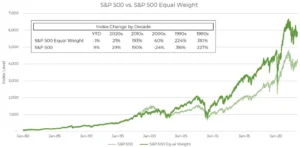The one certainty in markets is uncertainty and the only lasting solutions are patience, consistency, and humility. Easy to say but hard to live by. Often, acting how we know good investors should act is merely a matter of gathering perspective. So with the market turning to debt ceiling concerns, I thought a few words on the subject may add the context necessary to stick by your investing values.
Prior to WWI, the Treasury department, which issues US government bonds, had to ask Congress’s approval each time it needed to print new bonds. To address the inefficiency, Congress created a new system whereby an overall limit was set. That limit now must be raised periodically so the Treasury can issue new debt to pay off old debt in years of budget deficits.
The 14th Amendment of the US Constitution states, “The validity of the public debt of the United States, authorized by law, including debts incurred for payment of pensions and bounties for services in suppressing insurrection or rebellion, shall not be questioned.” In other words, the Constitution requires the government pay US debt obligations in full and on time to avoid a crisis in confidence. This clause was passed after the Civil War to assuage foreign creditors’ solvency concerns thereby preserving access to capital for rebuilding the country. What better way to instill confidence than memorialize one’s commitment in the Constitution?
Combine the WWI move to a periodic borrowing limit with the constitutional commitment to paying debts and you get a recipe for political strife. Both sides of the aisle have used the leverage of a threatened default to extract concessions from the minority party. Coincidentally, the brinkmanship of contentious debt ceiling negotiations itself hurts creditor confidence, cutting against the very point of the constitutional commitment to creditworthiness.
The S&P 500 fell by 6.9% in the six months leading up to the August 2, 2011 debt ceiling deadline. Days before the debt ceiling deadline, the Wall Street Journal quoted one money manager as saying, “If the US is downgraded…the action would likely be centered in the bond markets, though that could lead to a knee-jerk tumble in the stock market.” The US was subsequently downgraded, with S&P noting “less stable policymaking” and “political brinkmanship” as reasons for their opinion. The market was up 7.2% six months and 9.7% twelve months later. Meanwhile, yields on the 10-year fell 92 bps (from 3.54% to 2.62%) in the six months leading up to the deadline and continued to fall after the fact. (Yields rise when default risk increases as investors demand higher cash flow for placing their dollars at risk).
If market jitters increase around debt ceiling concerns, history tells us to stay the course. The only defense against market choppiness is patience, consistency, and humility. Remember what you own—companies with earnings power and balance sheet strength who pay you a steadily increasing dividend. Let the politicians argue, the worriers worry, and the commentators commentate while you collect your dividend and watch earnings grow. You won’t be disappointed.
Sources:
Wall Street Journal
Stata/St. Louis Federal Reserve Data






